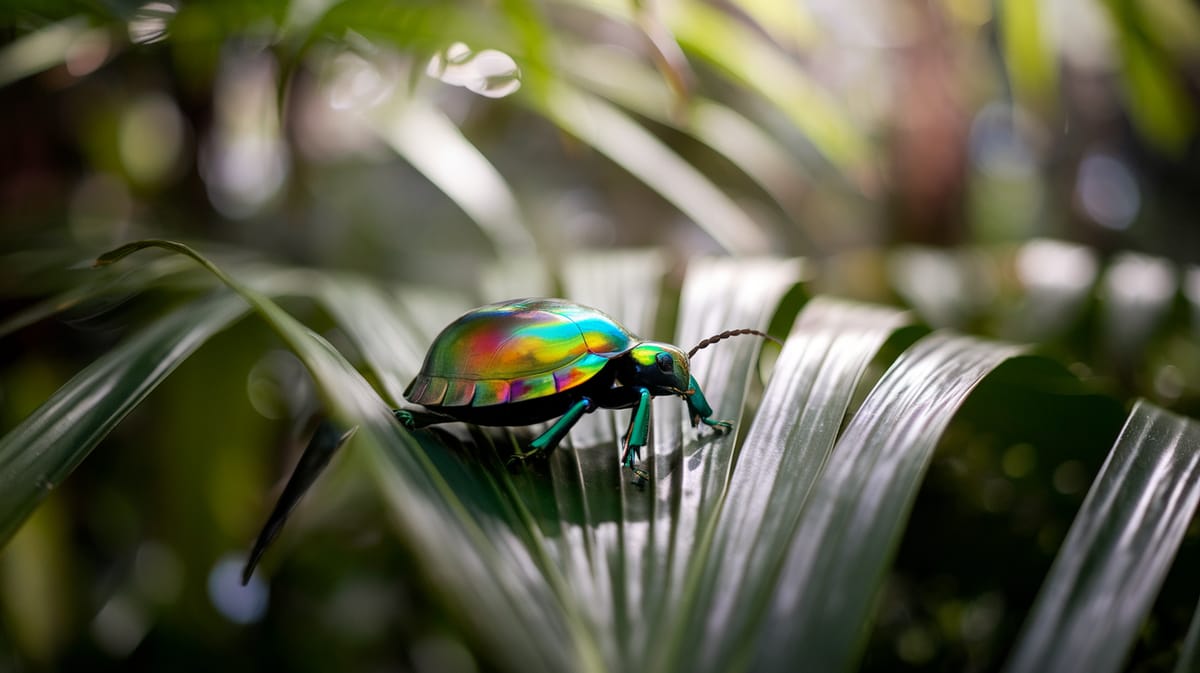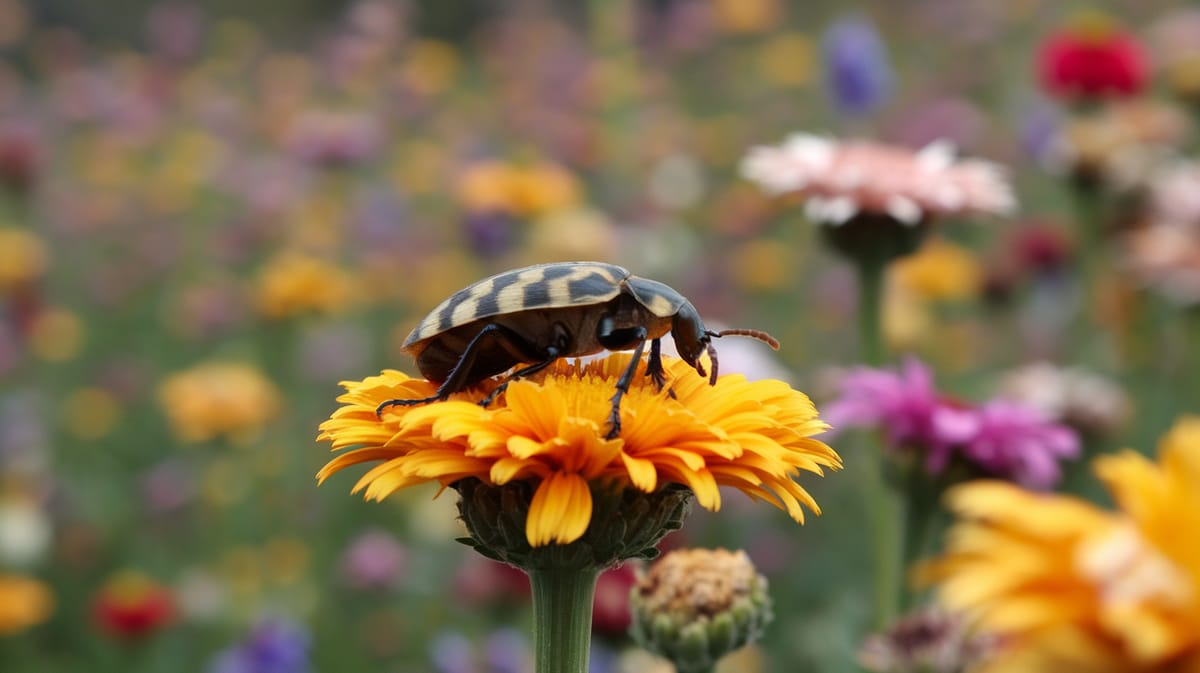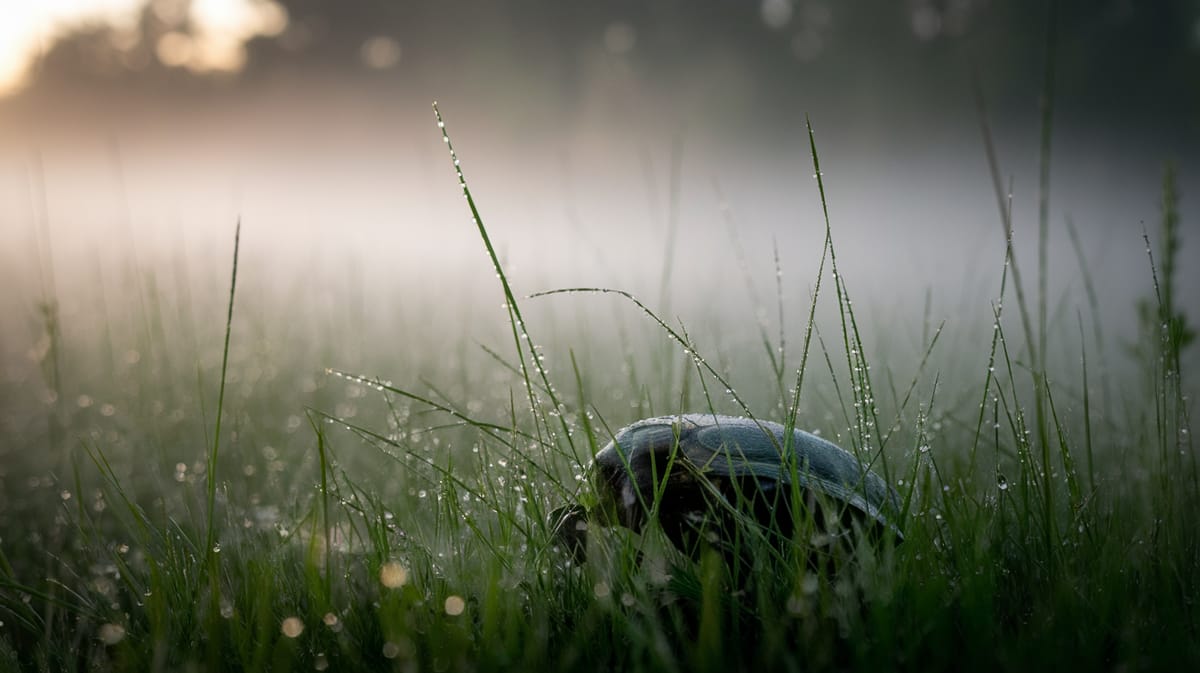Tortoise Beetle
A master of disguise, the Tortoise Beetle showcases vibrant shell patterns while playing a crucial role in controlling plant populations. Its clever camouflage deters predators and fascinates observers.

Key Insights at a Glance
Did You Know?
Taxonomy & Classification
Tortoise beetles exhibit unique adaptations with their shield-like, colorful bodies that provide camouflage and protection from predators, highlighting their fascinating evolutionary traits. Let's understand the evolutionary journey and classification of these remarkable herbivores.
Diverse Genera
The genus Cassida includes over 400 species, showcasing a wide range of shapes and colors found globally, especially in tropical regions.
Evolutionary Adaptations
Tortoise beetles developed specialized defensive mechanisms, such as fecal shields, which evolved to deter predators and enhance survival in diverse environments.
Lifecycle and Growth
A remarkable journey of transformation from Egg to Adult.
Egg
Tortoise beetle eggs are laid on leaves, offering protection and nutrients essential for the development of larvae.
Larva
Larvae feed on leaves, equipped with fecal shields for defense against predators, crucial for their survival.
Pupa
Pupation occurs on leaves, where larvae undergo metamorphosis, transforming into adults within their protective casing.
Adult
Adults are vibrant, shield-shaped beetles that mate and continue the lifecycle on host plants.
Dietary Habits
A leaf-feeding herbivore with remarkable adaptations, this beetle specializes in targeting plant foliage, leaving a distinct feeding pattern.
| DIET TYPE | DESCRIPTION |
|---|---|
| Primary Diet | Primarily consumes leaves of morning glories, sweet potatoes, and other related plants, using its specialized mandibles efficiently. |
| Secondary Diet | Occasionally feeds on other plant species, adapting to available vegetation in its environment. |
| Occasional | Rarely resorts to consuming dead plant material or other insects when preferred foliage is scarce. |

Behaviour and Adaptations
Discover the fascinating adaptations that make the Tortoise Beetle a master of survival.
Camouflage Armor
Its shell resembles a leaf, providing excellent disguise from predators.
Larval Shield
Larvae carry fecal shields for protection against predators.
Flexible Diet
Feeds on a variety of plants, aiding survival.
Ecosystem Impact
Tortoise Beetles play a crucial role in sustaining ecological balance by influencing plant health and species interactions.
Leaf Litter Breakdown
Contributes to decomposition by feeding on dying plant material, aiding nutrient recycling.
Predator Deterrent
Their presence discourages predatory insects from attacking plants.
Biodiversity Support
Provides food for various predators, maintaining biodiversity in ecosystems.
Conservation Challenges
Understanding the major threats to Tortoise Beetle populations and how to address them.
Habitat Destruction
Urbanization and agriculture diminish natural habitats, leading to population declines.
Pesticide Use
Chemical pesticides harm beetles and disrupt ecosystems.
Climate Variability
Fluctuating climates affect beetle life cycles and food sources.
Frequently Asked Questions
How long do Tortoise Beetle live?
Tortoise Beetles typically live for about two to three weeks as adults. Their lifespan can vary depending on environmental conditions and availability of food. The complete lifecycle from egg to adult can take around four to eight weeks.
What do Tortoise Beetle eat?
Tortoise Beetles mainly feed on the leaves of plants in the morning glory and potato families. They chew small holes or create a skeletonized pattern on the leaves, which can sometimes damage crops.
Are Tortoise Beetle poisonous?
Tortoise Beetles are not poisonous to humans or pets. They pose no significant threat and do not produce any toxins. They are generally considered harmless and are not known to cause any allergic reactions.
Are Tortoise Beetle endangered?
Tortoise Beetles are not considered endangered. They are relatively common and widespread across various regions. Their population levels do not currently face significant threats that could lead to endangerment.
What do Tortoise Beetle symbolize?
In some cultures, Tortoise Beetles are seen as symbols of protection and resilience due to their unique shell-like appearance. They can also represent transformation and adaptability because of their metamorphosis from larvae to beetle.
Do Tortoise Beetle bite?
Tortoise Beetles do not bite humans. They have mouthparts designed for chewing plant material, not for biting people. They are harmless to humans and do not pose any risk of bites or stings.
What color are Tortoise Beetle?
Tortoise Beetles can be various colors, including gold, red, orange, or green. They often have a metallic or shiny appearance. Some species can change color depending on environmental conditions or stress levels.
Does a Tortoise Beetle have wings?
Yes, Tortoise Beetles have wings. They belong to the Coleoptera order, which means they have two pairs of wings. The front pair, called elytra, are hard and protect the delicate hind wings used for flying.
What does a Tortoise Beetle look like?
Tortoise Beetles are small, round, and flat. They have a distinctive shell-like covering that can vary in color and sometimes appears metallic. Their shape is reminiscent of a tortoise shell, which is how they got their name.
Is a Tortoise Beetle an insect?
Yes, a Tortoise Beetle is an insect. They belong to the order Coleoptera, which includes all beetles. Like other insects, they have a three-part body structure, six legs, and two antennae.
Related Insects
Discover insects with similar characteristics to Tortoise Beetle - including shared habitats, diets, and taxonomic classifications
Share this profile
Help others discover Tortoise Beetle
